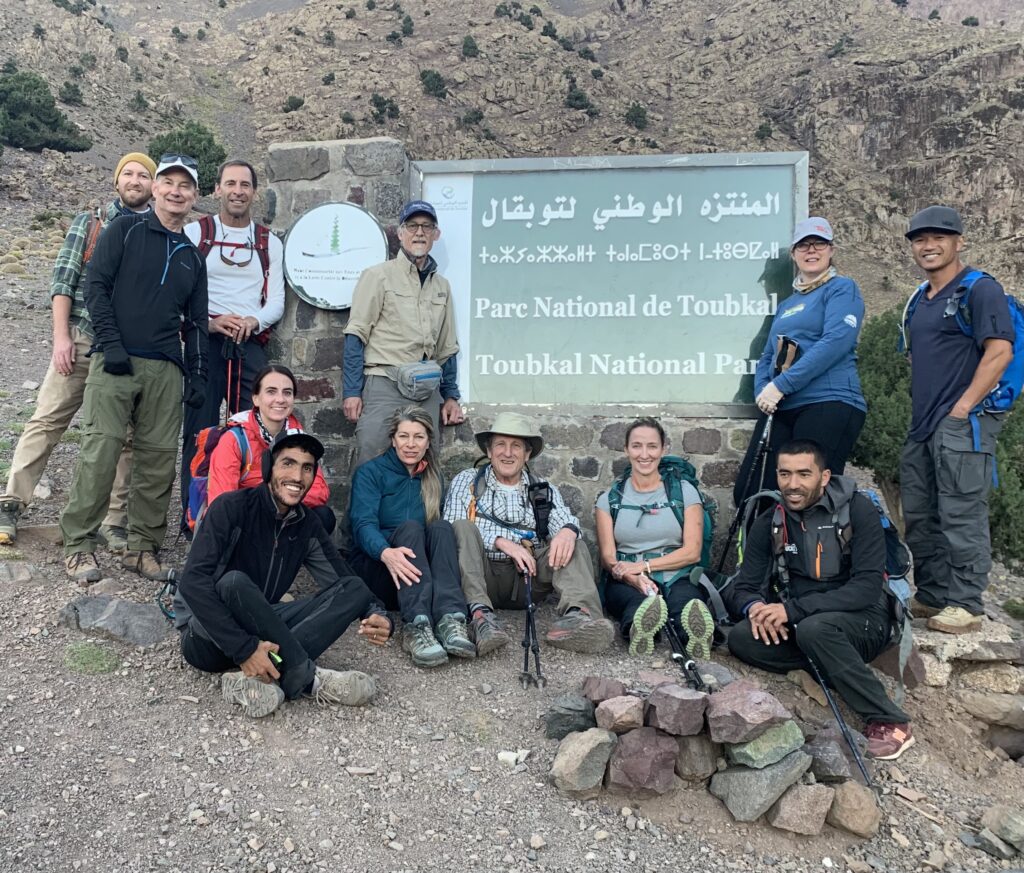We recently traveled to Morocco with the primary purpose of doing a trek through the High Atlas Mountains to climb Jebel Toubkal, the highest mountain in Northern Africa. This post will focus on the actual trek. To read about other parts of our trip, read my post about Marrakech which includes side trips to Zagora, Aït Benhaddou, and Ouarzazate, and my post about our time in the charming coastal town of Essaouira. The post about Marrakech includes general information and recommendations about Morocco.
Our Trip
Vuong found a great deal on a 10-day small group tour through Left Lane Sports. We paid around $1500 a person for this trip, partially because this was during COVID, in September of 2021. Unfortunately, Left Lane Sports no longer sells travel packages. But, the actual outfitter was Mountain Gurus, and you can book the same tour here. At the time of writing, the trip is around $3000 per person (still worth it). The trip included a 3 day trek through the High Atlas Mountains during which we climbed Jebel Toubkal, the highest mountain in Northern Africa at 13,671 feet. Other highlights were riding camels in the Sahara Desert and visiting the coastal town of Essaouira.
Mountain Gurus set us up with a guide named Omar, and if you would like to book through him, contact me and I can get you hooked up. It would likely be far less expensive to do it this way!
Our Itinerary
We stayed in Marrakech for a few days before the organized tour, and continued on to Egypt afterwards. We flew business/first class all the way using points! Read my post about how to get started in the points game here. For a more comprehensive education on points travel, or if you are looking to expand your knowledge on the topic, I highly recommend the “Point Me to First Class” podcast.
Day 1 • Arrive Marrakech, Morocco
Day 2 • Marrakech
Day 3 • High Atlas Mountains
Day 4 • Toubkal Valley • 11,810 ft
Day 5 • Jbel Toubkal • 13,671 ft
Day 6 • Essaouira
Day 7 • Marrakech
Day 8 • Zagora
Day 9 • Marrakech
Day 10 • Depart
This post will focus on days 3-5.
Packing and Preparation
At this time, American citizens do not need a visa for stays of less than 90 days in Morocco. Check the Department of State website before going. For citizens of other countries, find out what the requirements are here. The main languages in Morocco are Arabic and French, but English is pretty widespread. Learn a few words and phrases in the local language. I always recommend this. You are visiting their country- it is respectful and considerate to at least learn how to say hello and thank you.
This was a tough trip to pack for, because we needed to bring our own sleeping bags, sleeping pads, and trekking poles. So we had to check bags (mainly because of the poles, which came in very handy) and carry on our backpacks. Honestly, take poles. They were so helpful on this hike! The ones pictured below are collapsible, lightweight, and sturdy. We bought lightweight gear at a local outdoor outfitter, including sleeping bags and pads, poles, backpacks, and daypacks. You can buy the items we chose on Amazon if you prefer:
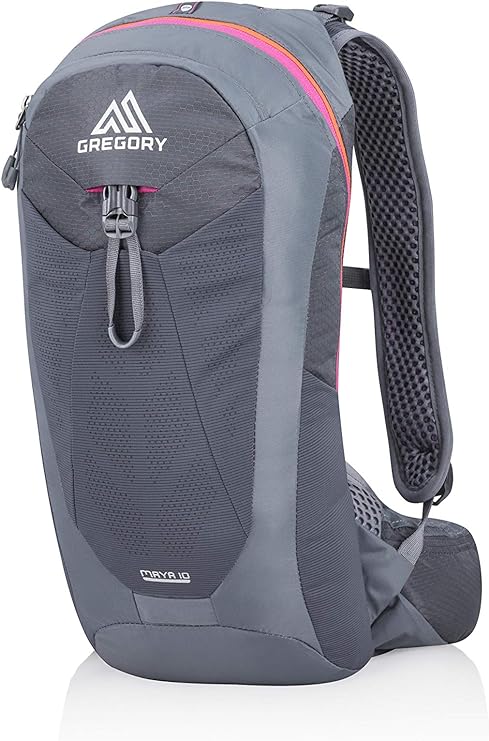
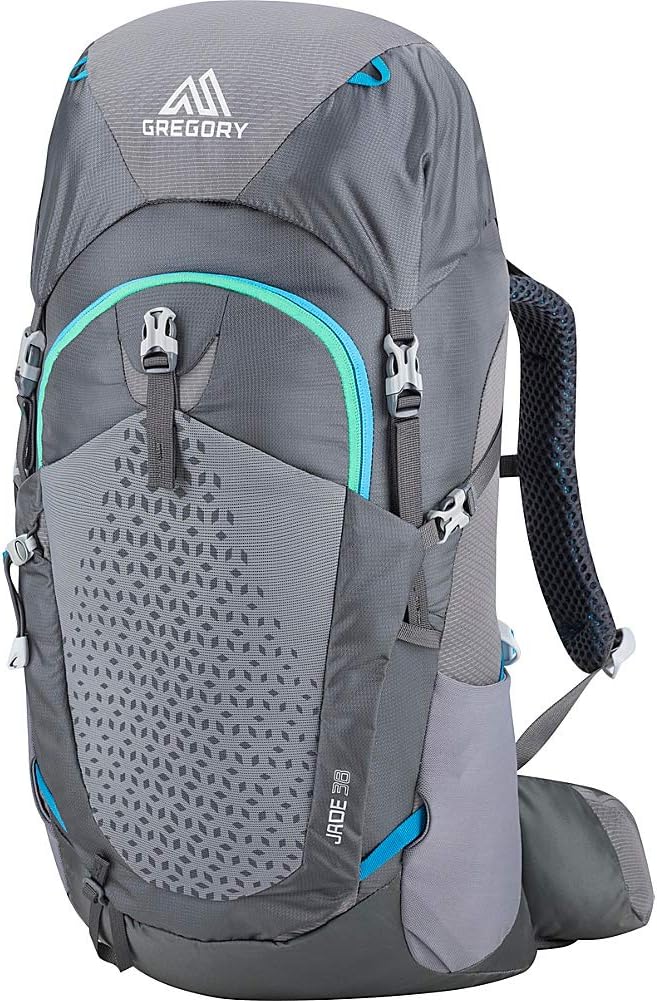

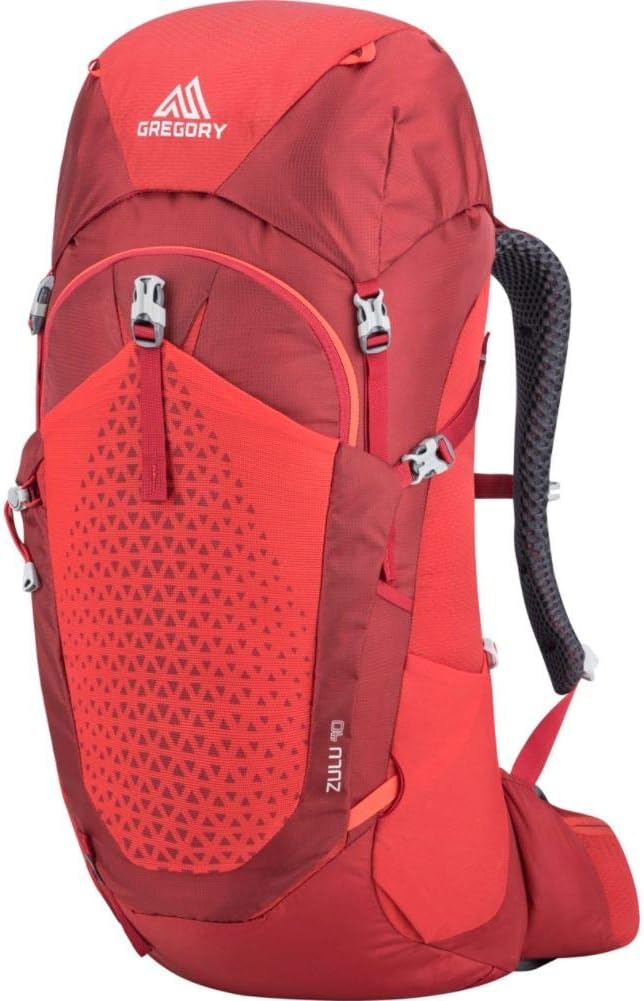



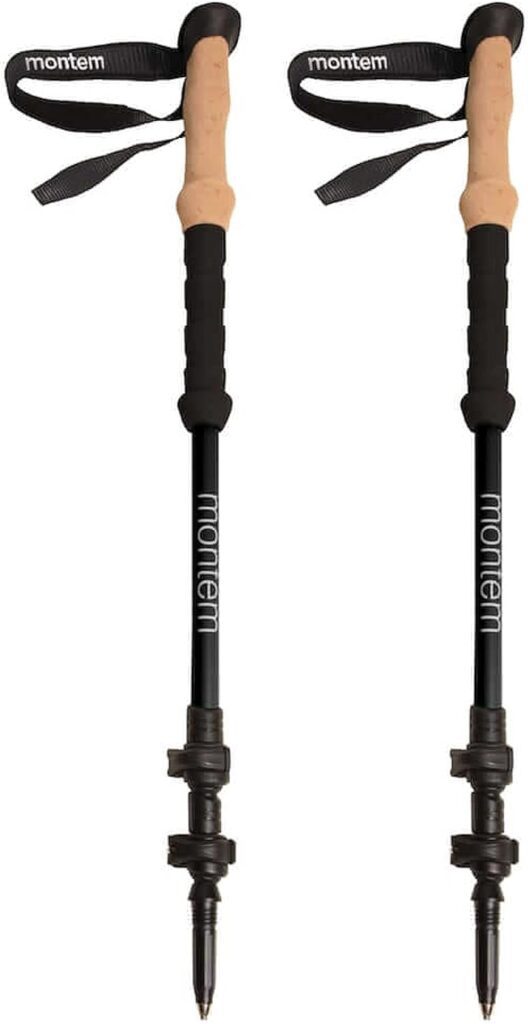

Morocco is a conservative Muslim country so ladies, cover up those slutty shoulders and knees! Capri pants and skirts work great, and a light linen scarf is useful for extra cover and sun protection. I wore capri length hiking pants and the kind of long hiking pants that zip off to form long shorts. A sun hat is essential, as much of the trek is exposed and without shade.
Pre and Post Trek
We met up with our group at our hotel, Riad Bahia Salam, on the first evening of our scheduled tour. This was a group of extremely cool people, but we didn’t know that yet! The group consisted of Tim, Lou, Bruce, Kelly, Jolanda, Nate, Cassie, an older doc we will call “The Fox,” Vuong, and me. This was a highly educated, interesting, well-traveled group, many of whom had climbed several notable mountains and had significant experience in outdoor adventure activities. Vuong and I had our share of experience as well, and had trained pretty extensively for this hike. Hussein briefed us about the tour, and a few of us went out for a delicious dinner at Le Tanjia.
City Tour
Our package deal included a day tour of Marrakech. Our guide, Hussein, showed us around his city. Highlights included the Bahia Palace, the Saadian Tombs, and an exterior tour of the mosque and its gardens. We learned all about Moroccan rugs and were given a sales pitch, but alas- no room in my backpack! We visited a “pharmacy,” where we learned about traditional herbal medicine.
Significant Sites in Marrakech
There are several historic and religious sites in Marrkech that you should not miss! The Bahia Palace is an expansive, gorgeous complex built in the 10th century for the Vizier (government minister) to the Sultan. Jardin Majorelle looks amazing, if you are into botanical gardens. Ben Youssef Madrasa is a school of Islamic studies built in the 12th century and is now a Unesco World Heritage Site. The Koutoubia Mosque is beautiful and its minaret is a prominent feature of the skyline of Marrakech, but you cannot enter unless you are Muslim. You can admire it from the outside and enjoy the haunting call to prayer 5 times a day. At the Saadian Tombs, you can see the burial sites of over 60 members of the Saadian dynasty and their servants, from as long ago as the 16th century.
Gnawa Musician
Outside of the palace, a musician played Gnawa music with his 3-string guitar-like instrument, apparently a lute known as a “hajhuj.” Gnawa music is a traditional type of music characterized by repetitive chanting. He made a real impact on us, prompting a cultural discussion of our possessions and how they possess us. When we travel, we realize how little we actually need to survive, and what is really important- making connections with other people and love of our fellow humans. Learning, growing, experiencing.
After our tour, we realized how difficult it was to find a glass of wine in Marrakech! We just gave up- not worth it. If you want to read all about laws and customs regarding alcohol, and find out where you can find it, read this article. Be careful, be aware, and don’t break the law.
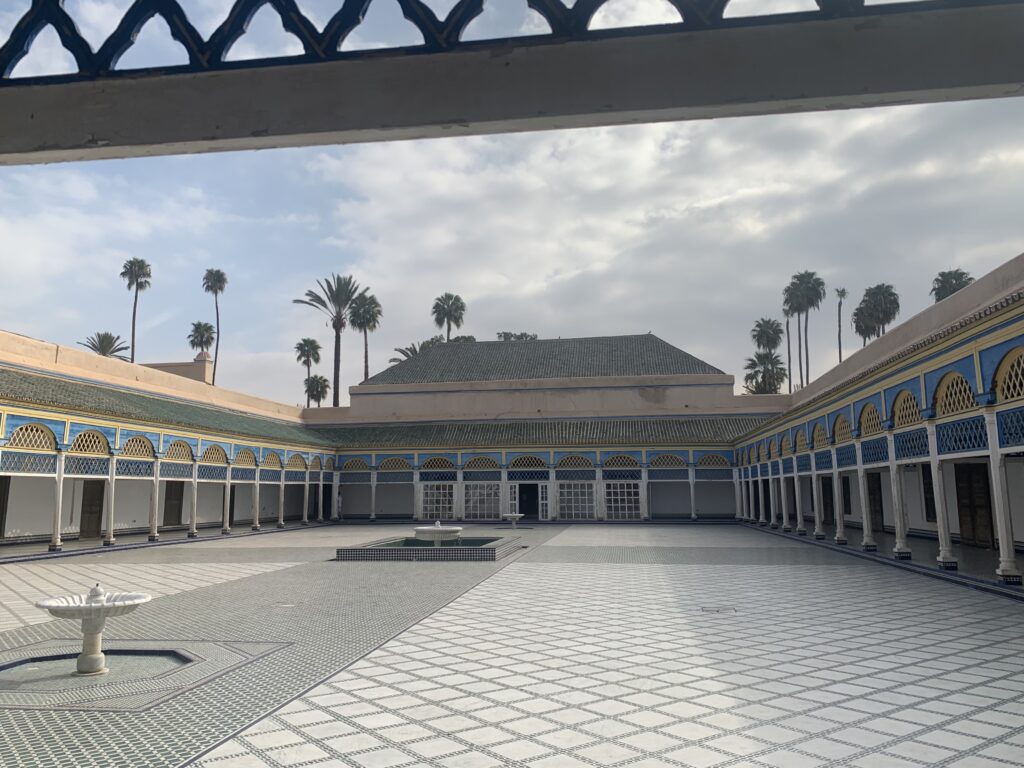



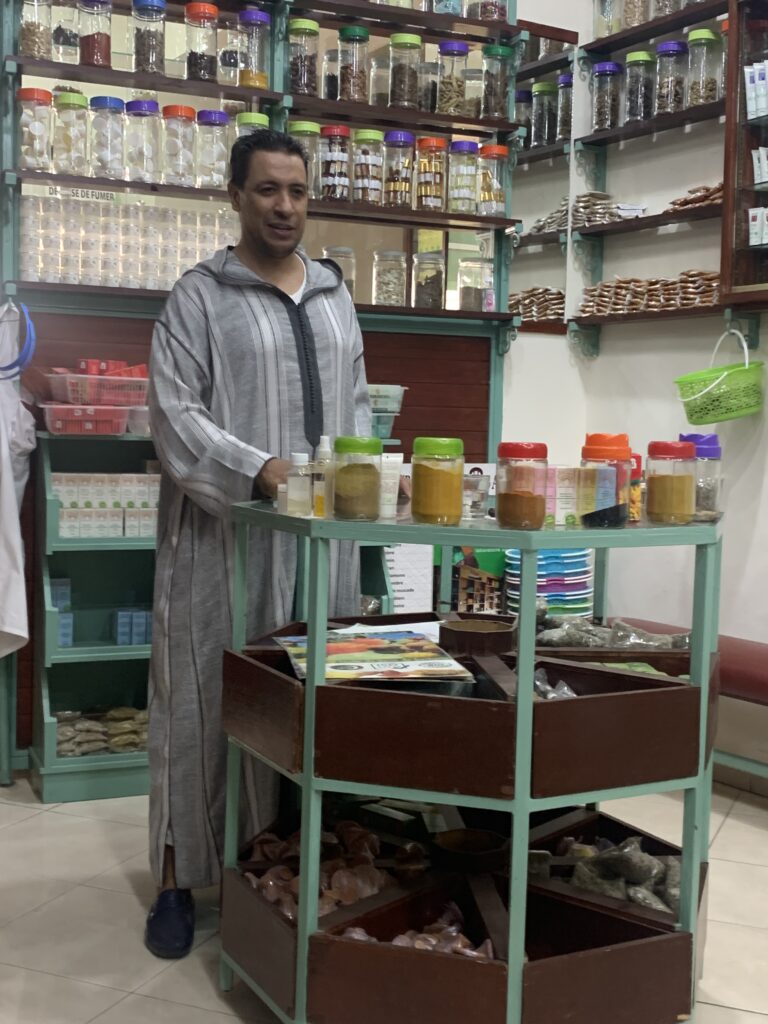

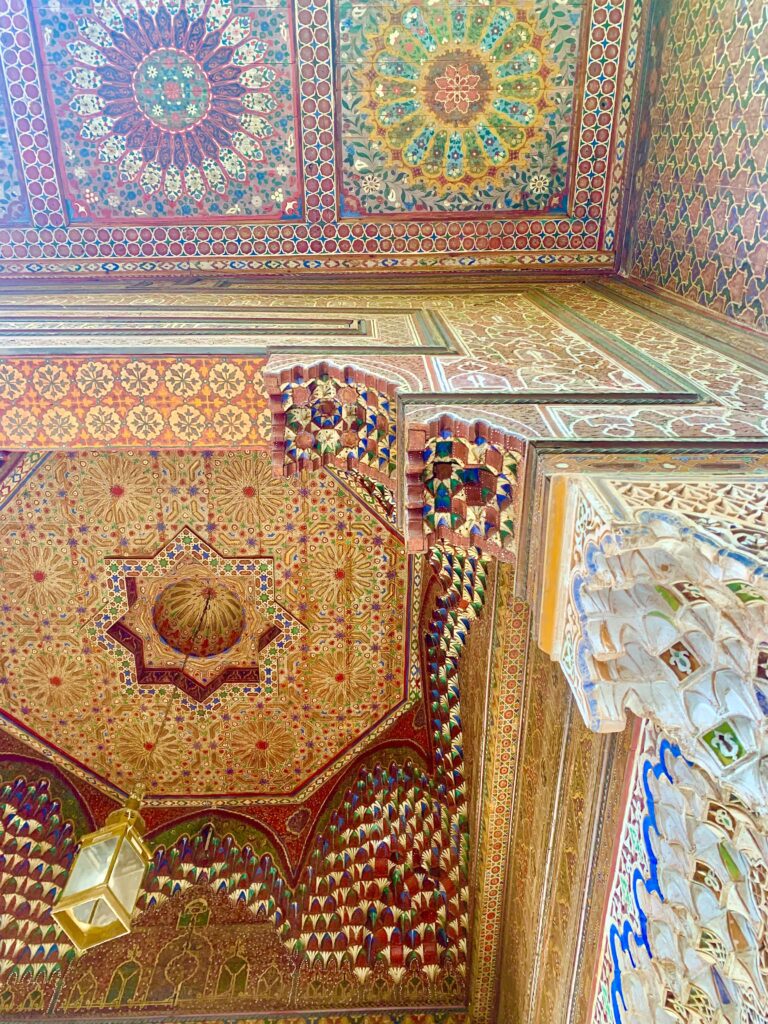

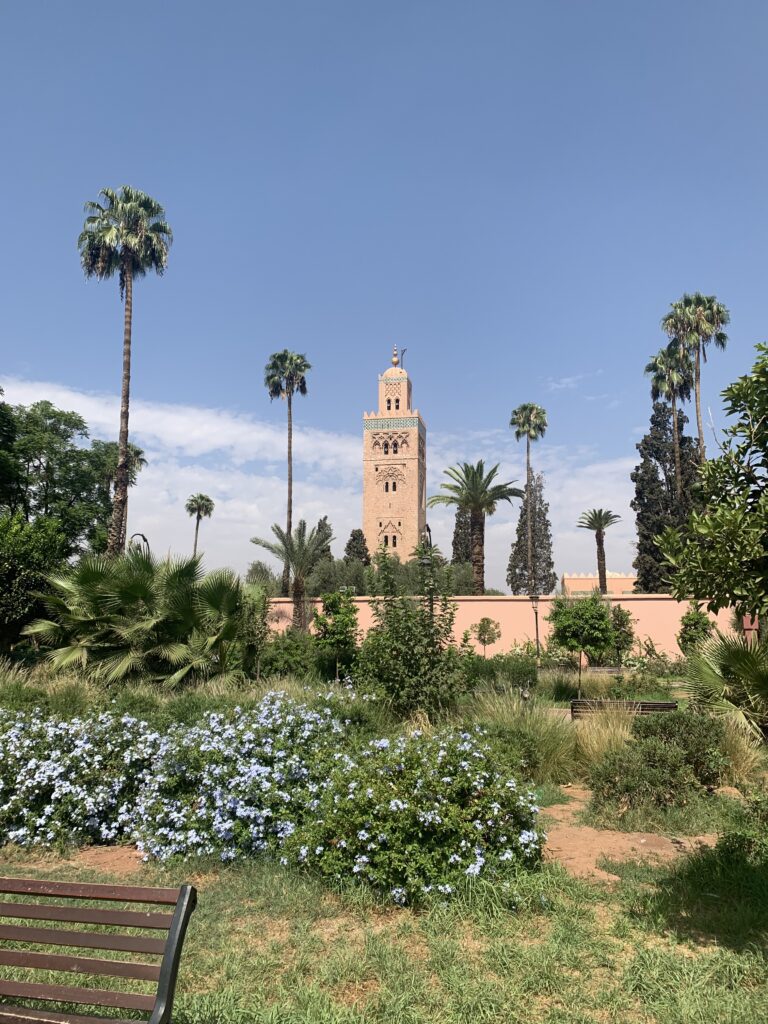

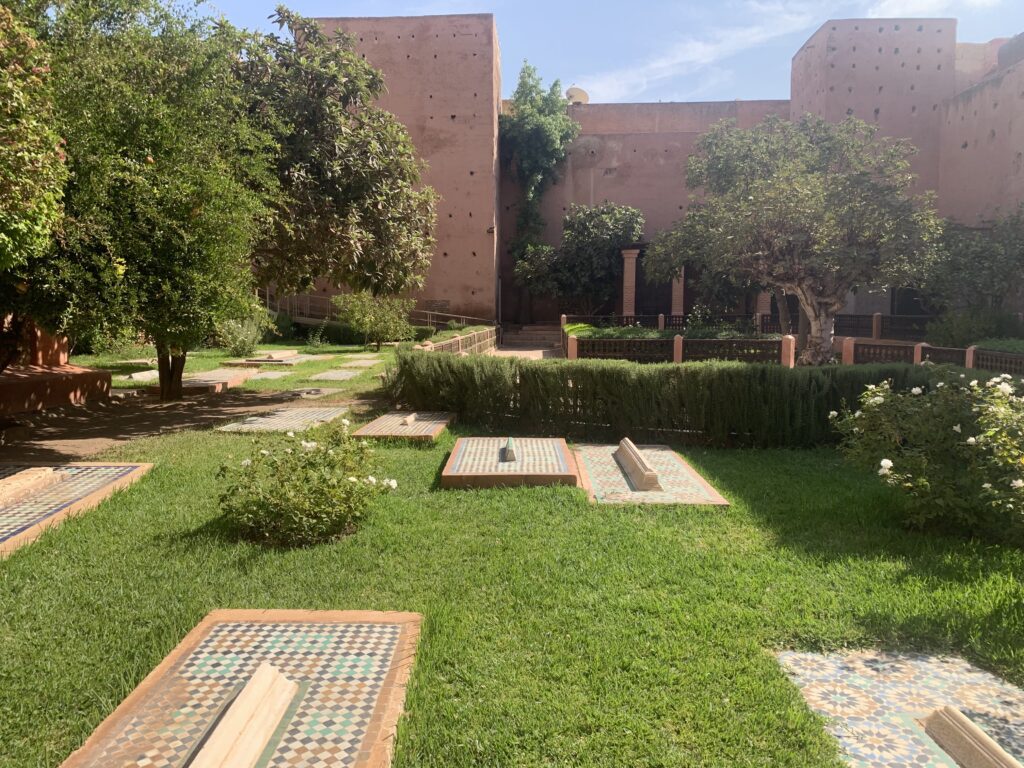

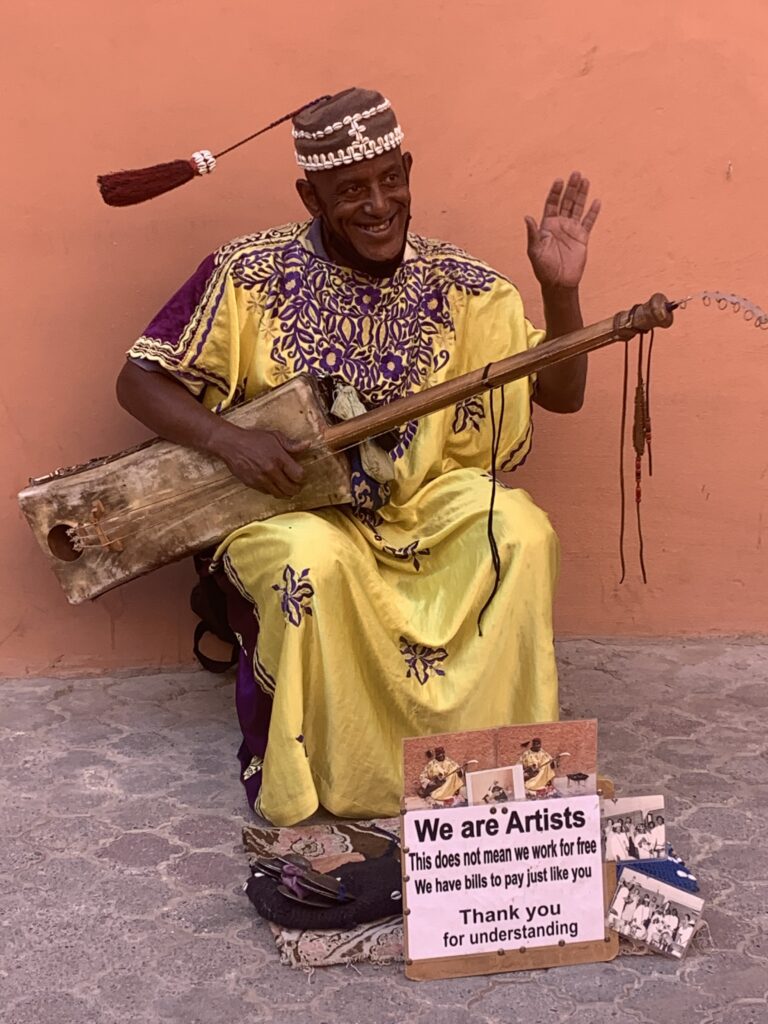

Zagora
After the trek, we went to Zagora. The drive was long, and I feel like we got to know Kelly, Cassie, Nate, and The Fox pretty well. Kelly is a TSA intel officer from Montana, whose husband, at the time of writing, is in Antarctica intercepting asteroids or something like that! Cassie and Nate are our younger twin travelers, engineers in Iowa. With the benefit of Facebook, we keep in touch to this day! The Fox was a super interesting retired internal medicine doc with extensive climbing experience.
We crossed Tizi n’Tichka Pass at 7,415 feet, past several berber villages to Zagora, the gateway to the Sahara.
We had two major stops at Aït Benhaddou and Ouarzazate.
Aït Benhaddou is an UNESCO World Heritage Site and is a fortified village built of earthen clay on a large hill. There are lots of stairs, but it is a very interesting stop. For a small fee, you can enter a traditional house and see some household and grooming implements. The village was damaged during the earthquake, but hopefully it will reopen to tourists.
Ouarzazate is known as the “Hollywood of Africa.” You can tour Atlas studios and see movie sets from the Gladiator, the Mummy, and Game of Thrones. This was the only place we saw snake charmers with actual cobras. The guys in the square in Marrakech had garter snakes or something similar.
We had lunch at Les Jardins de Ouarzazate, which is also a hotel. This would be a great place to spend a night and tour the movie studios and sets.
Berber Village
The highlight of this part of our trip was a camel ride into the desert and overnight stay in a tented Berber camp. We stopped by the side of the road to meet our camel team. They wrapped our heads with scarves in the traditional manner. Our camels folded their legs under them to allow us to mount the saddles. Colorful blankets covered the saddles, and there were metal handles to hold. Once we were mounted, the camels slowly got up and began to lumber forward. They loped along rhythmically as we took in our surroundings.
The sunset to our backs lent a beautiful amber light to the landscape of rolling dunes. My camel had a split ear, and their teeth were terrible! Oh and… they spit! Nate’s camel behind me kept making squeaking and snorting noises. We rode for about 40 minutes to the tented camp. Most of the dunes were rocky, but a few were pure sand. We trudged up one to watch the sunset. What an experience!
The Tented Camp
The camp consisted of several tents arranged around a central common area. The central area had several chairs and couches arranged in conversation groups, and beautiful Moroccan rugs lined the ground. We had tea and chatted with the berber guides. The tents had beds and lamps, and there was a common bathroom tent.
After another tagine dinner, we gathered around the campfire for conversation and music. We got to try our hand at the drums and zils, as the berber guys sang and chanted.
When the music ended, the silence of the desert was absolute. The sky was thick with stars, and I took a moment to experience the atmosphere. Such serenity and peace.
In the morning, our guide wrapped my head and dubbed me “Fatima.” We mounted our camels and headed back. Nate gained the nickname of “The Camel Whisperer,” as he seemed to really bond with these docile creatures, petting their heads and scratching behind their ears.


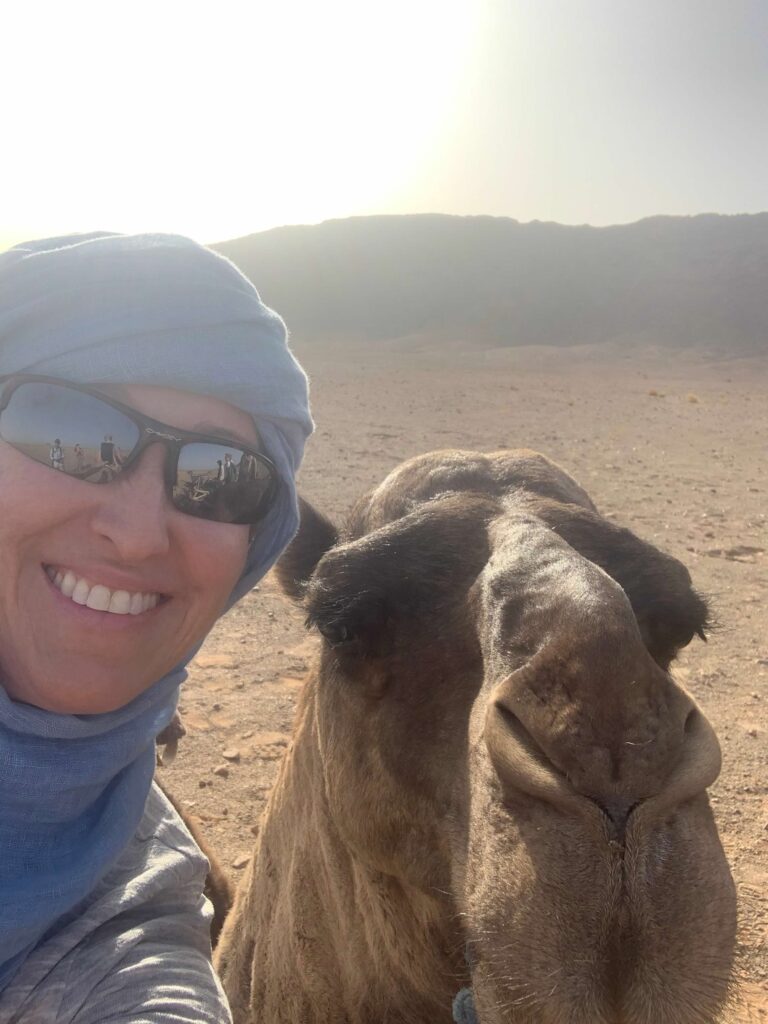

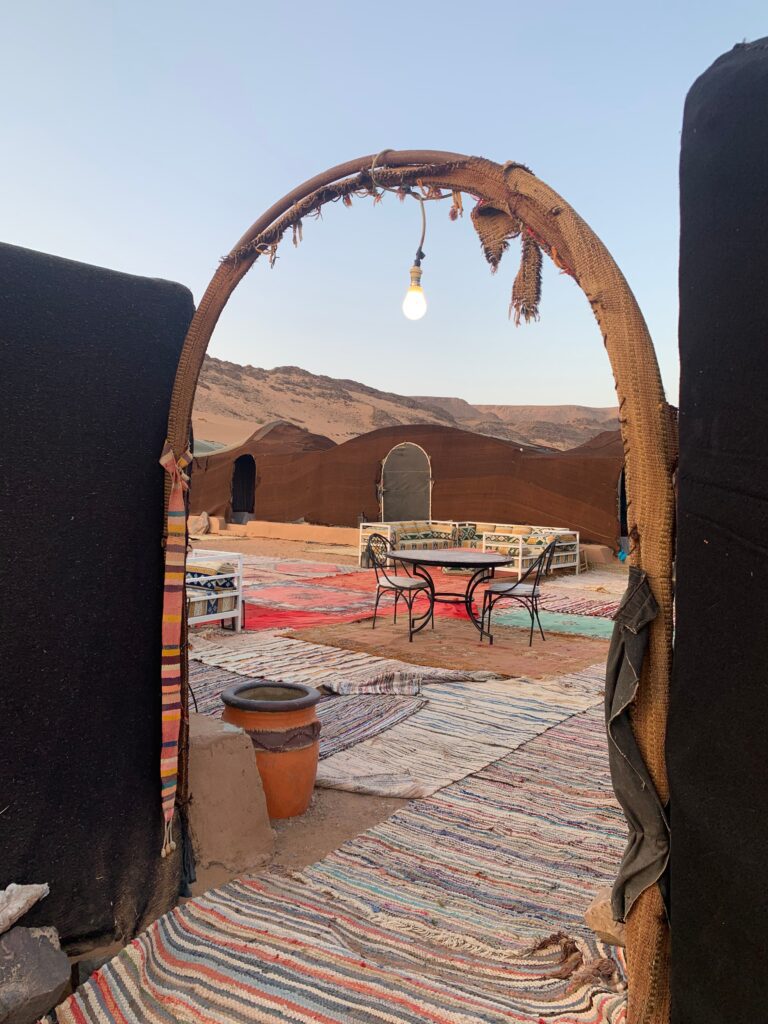

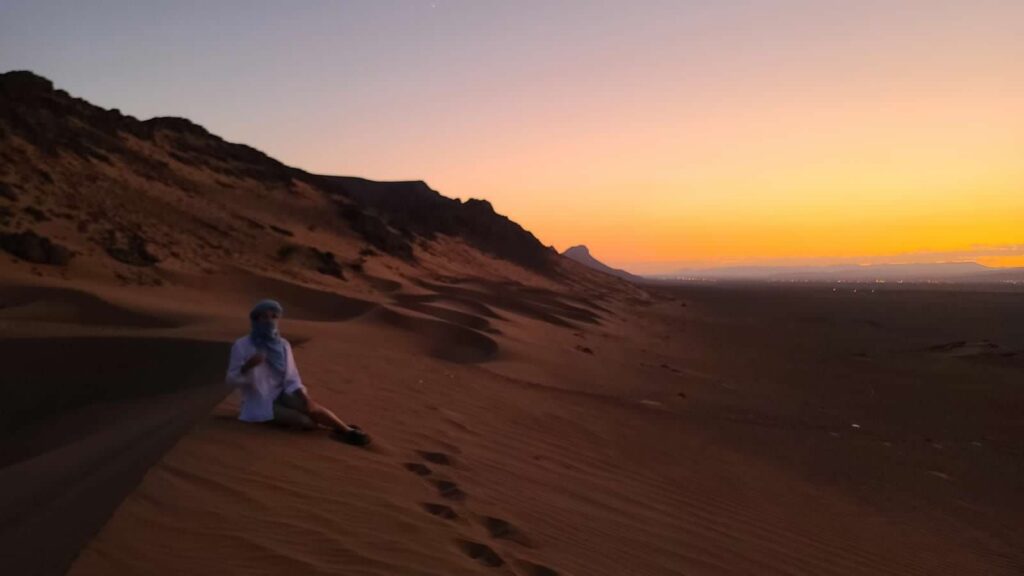

Day One- High Atlas Mountains Trek to Jebel Toubkal
At 13,671 feet, Jebel Toubkal is the highest mountain in Northern Africa. The climb is not technically technical, but it. was. hard. I am pretty fit, and have experience hiking. I don’t have a ton of climbing experience, but I had climbed a 14’er and hiked the Inca Trail prior to this trip. I work out hard and my cardio is good. This hike was steep, hot, and sometimes scary. Vuong, my super-fit husband, agreed that this was the most difficult hike we had done before or have done since! A few of the folks who had climbed Kilimanjaro said this was harder, although the internet will tell you a different story. Take it seriously. Train hard.
The Mountain Gurus description, in our opinions, underestimates the difficulty of and time required to complete this hike.
Our driver picked us up in a large van (that held all 10 of us) around 8:30 am for our drive to the High Atlas Mountains. I watched as the scenery changed from flat desert to foothills to mountains. Little villages peppered the hillsides, and the roads were very windy and crooked. We passed women in hijabs, and people riding donkeys along the road, some hauling large loads or pulling trailers. The land was beautiful and unique, in warm hues of red, orange, and brown.
We had lively conversation for much of the drive, which continued during the hike. Tim was a retired accountant, and friends with Jolanda, a gorgeous blonde dentist. Bruce was a hand specialist who resembled Scott Bakula, and Lou a 70-something retired world traveler.
We stopped at a seemingly random place that was actually the start of our hike, Aguersioual, at 5,259 feet. We met our guides, Omar and Hassan, along with our mule team of 5-6 guys and their mules. They took our large packs, and we took day packs with snacks, water, and essentials for the day. We started out on a dirt road, making a gradual ascent.
Lunch
We climbed the Tizi Oudite pass, with a summit at 7280 feet, passing berber villages and taking in spectacular views of the Imlil and Azzadine valleys. We stopped for lunch at Ait Aissa at 5880 feet. Our porters had set up cushions, blankets, and a mini-feast of tagine, bread, veggies, and lentil soup. They served fruit and mint tea for dessert.
The first part of our hike after lunch was relatively flat, and I talked to The Fox for much of this segment. Then, we started to climb. Juniper trees dotted the landscape, and we passed through Tizi Oussem village, where kids hung out and adults worked. The ascent became steeper, through hot, rocky terrain. It was mostly open, and I felt like a camel spider chasing the shade of juniper trees. I thought for sure I was going to die between trees.
I can’t remember how long we hiked this first day. The Mountain Gurus website says it was 5-7 hours, but it was more like 8 (or more). With that said, Nate and Cassie, young whippersnappers that they were, pretty much ran the entire way and may have made it in under 7 hours!
The Mountain Refuge at Azib Tamsoult, 7380 Feet
Finally, we could see our lodge for the night across a valley. Despite being exhausted, I wanted to run to that beautiful mansion on the hill! OK, it was more like a large hut, but at that point it looked like Mara Lago. The Mountain Refuge at Azib Tamsoult had a large deck, an open area, a couple of bedrooms, a dining room, a large bathroom, and a kitchen. Our bedroom had 4 sets of double bunk beds, and it was full of hikers.
We had afternoon tea with some of the best popcorn I’d ever had (and I love popcorn) and cookies on the deck, as we watched the sun set. We shared a feast of tagines, lentil soup, and fruit. We went back out to the deck where we received an astronomy lesson from Bruce. Not only was this guy an expert climber and orthopedic surgeon specializing in the hand (arguably one of the most important body parts), but he had an encyclopedic knowledge of astronomy! It seemed like you could see every single star in the universe in the inky black sky over the mountains. You could actually see the gases of the Milky Way.
What a lovely end to this day… We had ascended 3500 feet and descended 1400 feet. It was a bit difficult to sleep, with the heat and sounds of so many people packed into one room, but sleep we did.
Day Two- High Atlas Mountains Trek to Jebel Toubkal
We started this day with a breakfast of porridge, flatbread, boiled eggs, and instant coffee. This was served with cheese, cream cheese, honey, jams, and a chocolate/marshmallow fluff blend for the bread and porridge. I enjoyed it very much.
If yesterday was tough, today was brutal. We ascended for almost 7 hours, with an elevation gain of 5200 feet over 5 miles (that was just the beginning). The first part was rocky, steep, and focally narrow, after which we were rewarded with a gorgeous waterfall and breathtaking vistas. We could almost see the Sahara Desert.
Then came one of the hardest parts of the trek that I completed. According to Mountain Gurus, there were 82 switchbacks. Some sources said 84, and others 99. I COUNTED 92, but I could have been wrong. I started out thinking of a year of my life for each switchback. Once I hit my current age of 48, I started to consider a person I knew of each age for the rest. Thinking of and planning the future helped me get to the top.
The advice and encouragement of Vuong and my new friends also helped me get to the top, not to mention those poles! Lou recommended shortening the poles when ascending and lengthening when descending. He should know- he retired from his full time career, but took a part time job at REI to have something to do. I’m sure the discount didn’t hurt.
You don’t stop moving when you get old, you get old when you stop moving!
-Lou
The Fox mentioned that climbing mountains was not like climbing a ladder, but more like climbing a roller coaster! He was so right…
Finally, at long long last, after completing the 1 million switchbacks, we reached the top of Tizi Aguelzim pass at 11,810 feet. We descended a bit to a large, grassy plateau where we had our lunchtime feast. Jebel Toubkal loomed in the distance and it was intimidating! Oh so pointy. We were stalked by herds of sheep and goats, peed behind rocks, and some of us napped.
After lunch, we had a 2 hour descent to base camp, where we would spend our second night. This may have been the worst part (have I said that before?). I started off strong, then somehow ended up alone. I had been near the back of the pack the whole time- this was not a race. I wanted to take it all in, get lots of photos for you, my dear reader, and not die. I ended up a little ahead of the back of the pack, but not quite at the front of the pack. I had given someone else one of my poles and had gotten stopped by a mule train. There was no real danger (other than falling to my death), as Hassan was not too far behind me, but it felt like I was going to leave my corpse on that mountain. It was a narrow track on the side of a sheer rock face, and the other side went straight down…
Toubkal Refuge, 10,520 Feet
After what felt like 4 more hours, I made it to base camp! Vuong had been there for about 5-10 minutes, but I was upset and utterly exhausted. To be honest, I was having doubts about the next day… the day we were to summit Jebel Toubkal. I tried not to think about it. Today, we had climbed 4430 feet (5200 according to Lou’s altimeter).
After another nice dinner, we went to bed in another room with numerous bunkbeds. I fell asleep having resolved to attempt the summit. Departure was set for 5:00 a after a 4 am breakfast.
Around 2:30 am, I got up to go to the restroom. Going down the stairs, I missed the last one and sprained my ankle. I have never been so happy to be injured! It was painful, swollen, and purple. Bruce, being the awesome doctor he was, had an ace bandage on hand and expertly wrapped my ankle. I had breakfast with the group and saw them off. It was cold and windy as I watched them disappear into the darkness.
Then I took my happy self inside for second breakfast and a couple of hours to watch the sunrise, write in my journal, and chat with the hikers who chose not to attempt the summit. I had a lovely morning at base camp.
We expected the climbers to return around 12:30. Around 11:15 am, I heard Vuong’s voice! They had returned! After hearing how cold, windy, rocky, and terrifying the last part of the hike to the summit of Jebel Toubkal was, I was even more thankful for my sprained ankle! Don’t let that discourage you- I may be exaggerating a bit for dramatic effect. Ask Vuong, Lou, or Jolanda! Don’t ask Nate, Cassie, or Bruce- they probably ran up and down the mountain. They gained 3500 vertical feet over 3.2 miles.
Don’t think the journey was over… we still had (according to Omar) an easy 7 mile, 4 hour hike to Imlil. With my sprained ankle, it was more like 6 hours. It was relatively flat, but much of the trail had river rocks, which made for uneven terrain which was tough on the ankle. The ace bandage and my hiking shoes provided some support and kept pressure on it, which helped a lot. We had several rest stops, one of which was by a waterfall at the home of a holy man. We passed through several villages, then a lush green park.
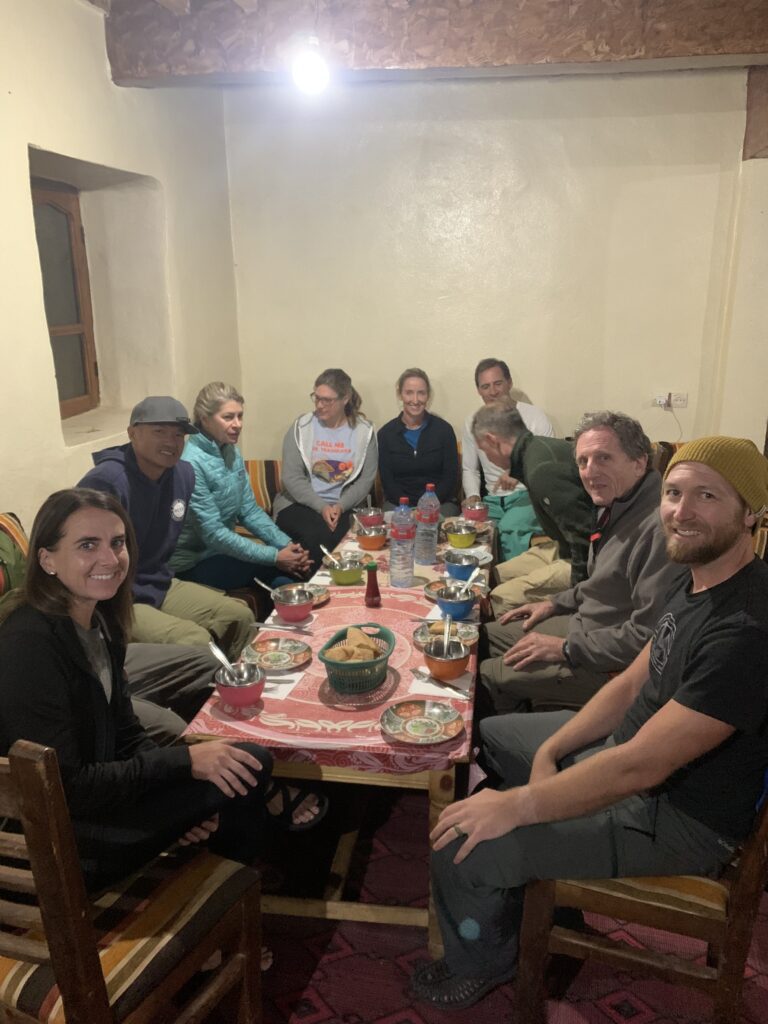

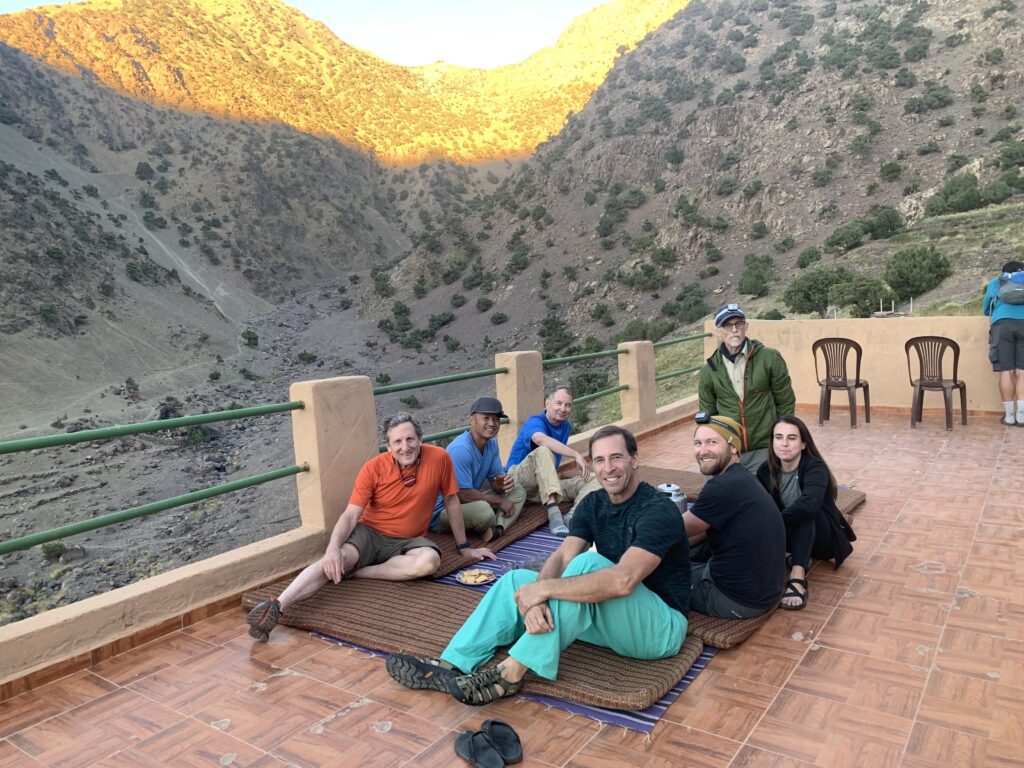

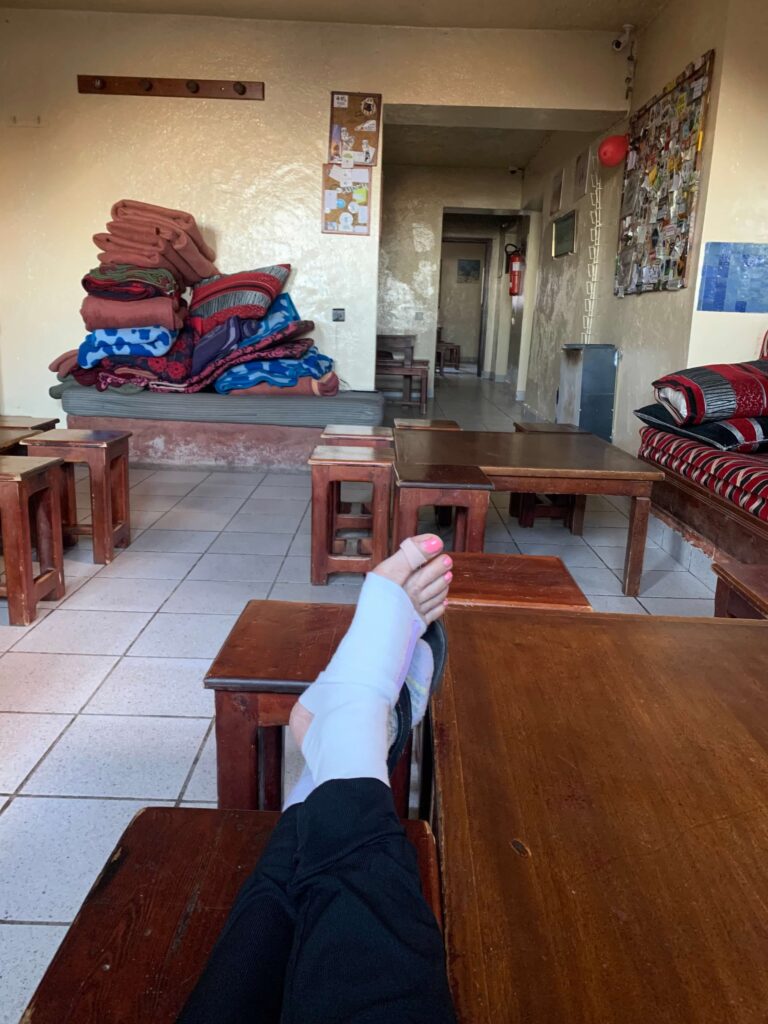

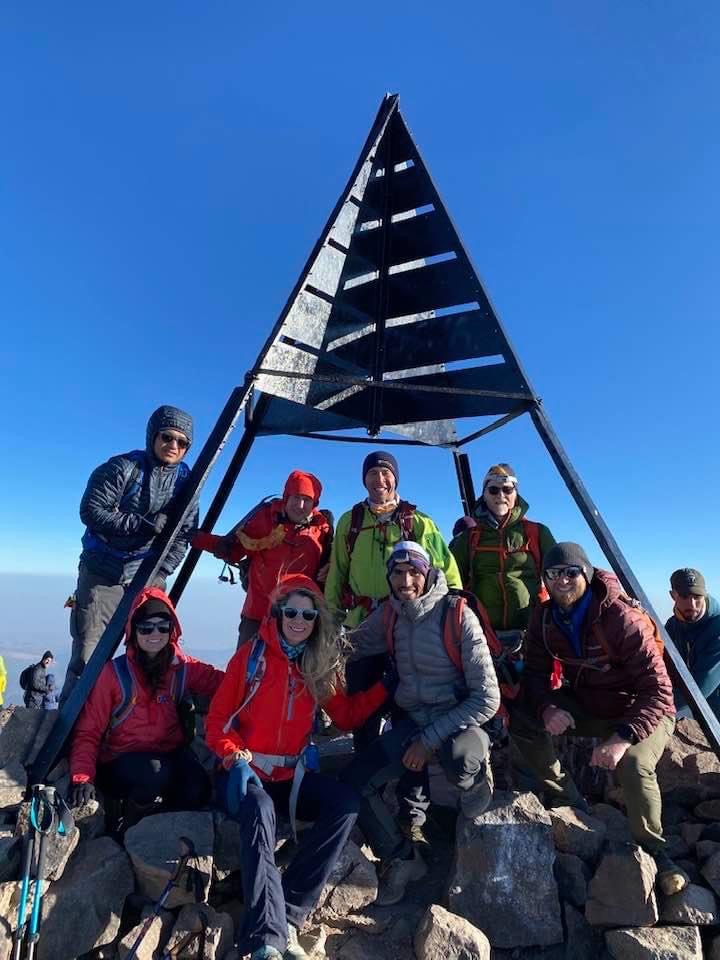

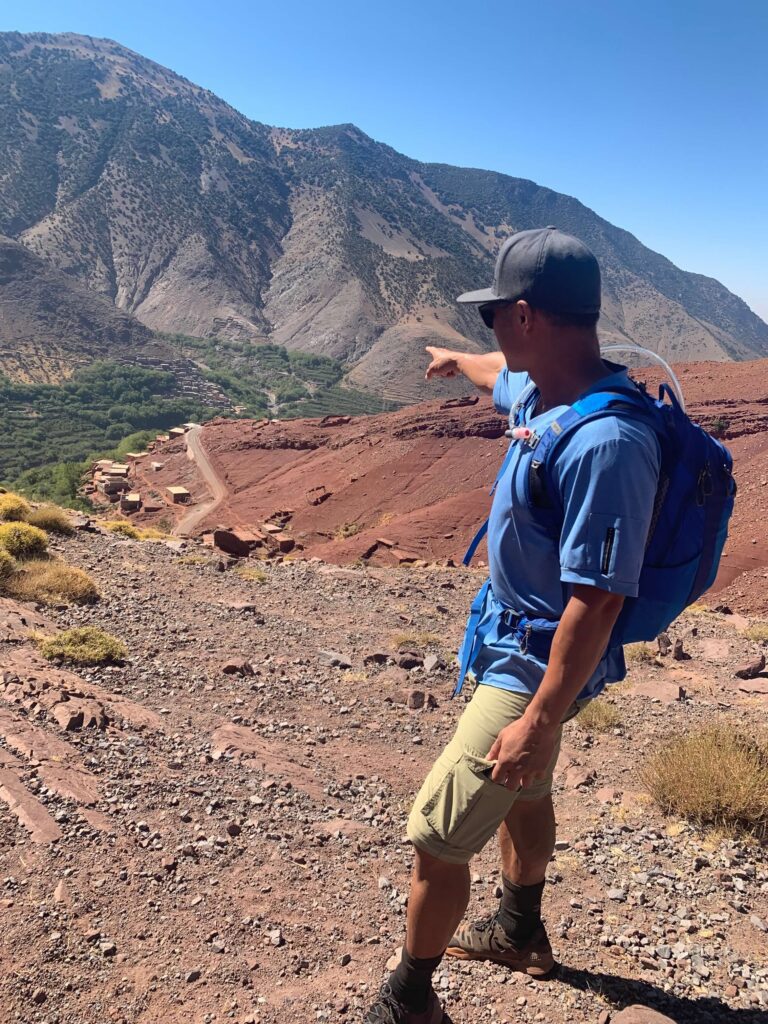



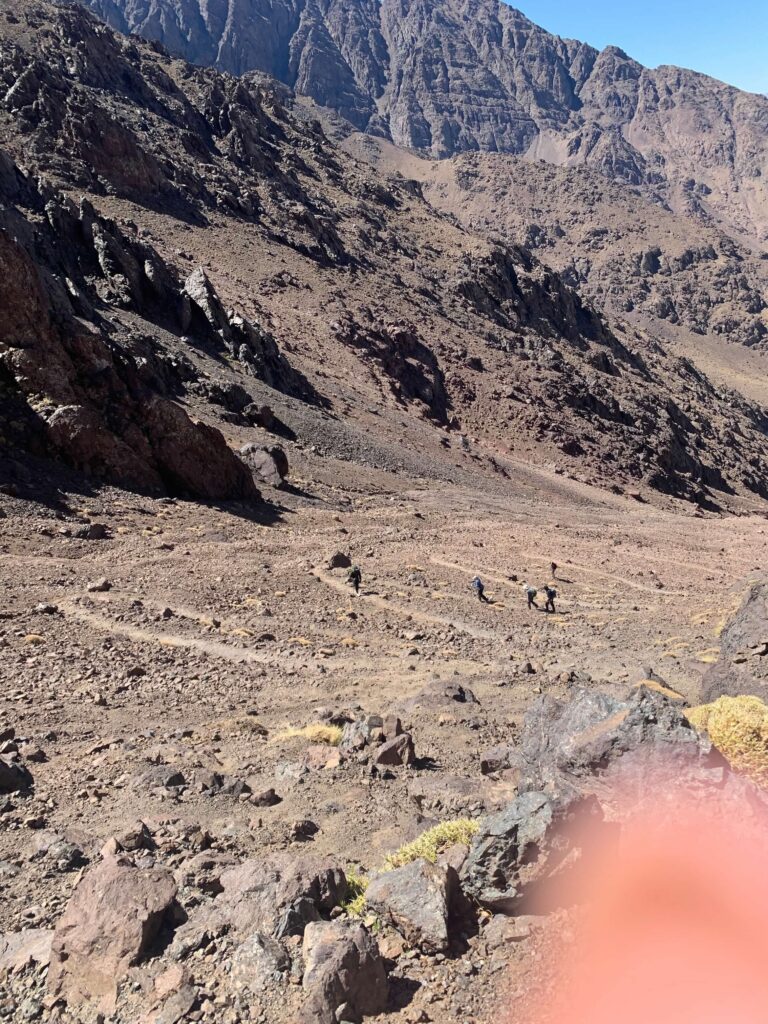

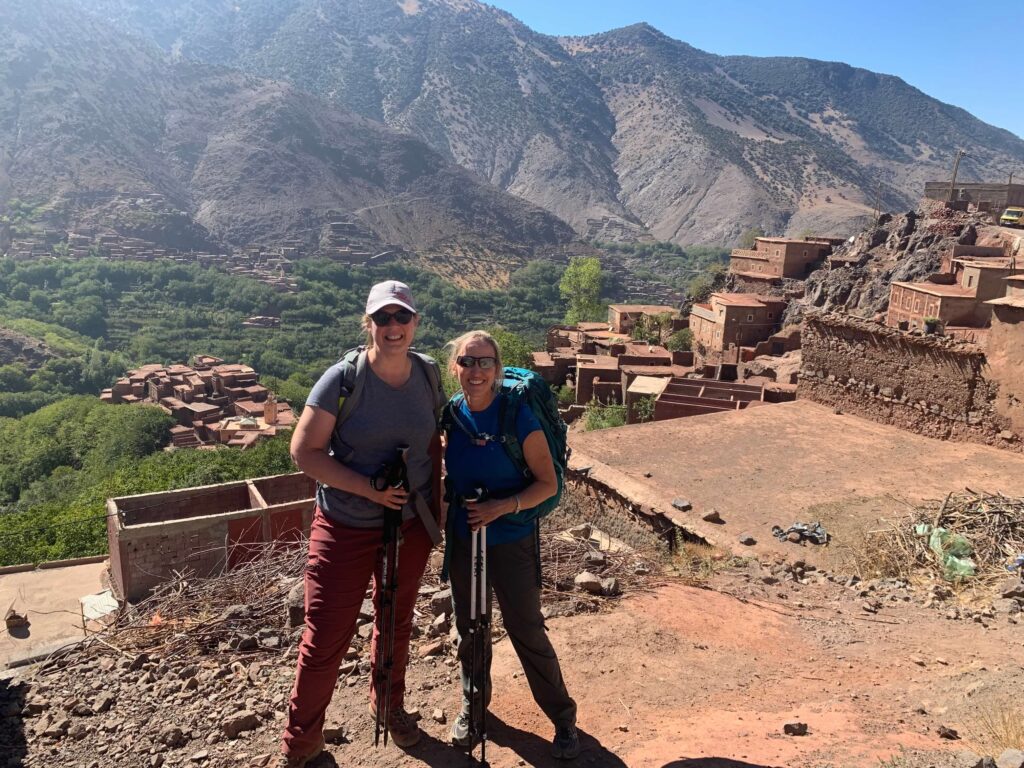

Imlil
At long, long last, we arrived at our Mecca, Dar Assarou, our Riad in Imlil. What a lovely, warm place. The people were so kind and took great care of us after this crazy ordeal. I mean, after this fun adventure (lol)!
Our room was exquisitely outfitted in rich Moroccan fabrics in shades of red and orange, with heavy, intricately carved wood furniture and stucco walls and entryways. We had a balcony with a view of the mountains and the minaret, and heard the call to prayer at least twice during our stay. The shower was probably the best part, and I had one of the best showers of my life!
We probably had the best dinner of our trip here! The dining room had heavy tables of rich, dark wood. We were seated like Sultans on built-in seats piled high with plush, jewel-toned cushions.
Talk about a feast! The twelve of us (10 hikers plus Omar and Hassan) sat at a huge table, and the table was completely filled with delectable Moroccan cuisine! My favorite was Kafta tagine, which had meatballs and was topped with eggs. Here is a recipe I found online. Vuong’s favorite was roast chicken with chips (French fries), which doesn’t sound special but it was! The meat was moist, the skin crisp, and the spices complex. We had a fresh Moroccan salad with tomatoes and cucumbers, berber tagines, eggplant salad, and more!
It was a perfect end to a challenging 3 days, and we had to say goodbye to half of the group. They had opted for the Merzouga Dunes Luxury Camp add on, which took them deeper into the Sahara Desert. The rest of us headed off to Zagora (see above).
Last Words
I have gone on about how difficult this was, but nothing transformative is ever easy. This is a unique, beautiful part of the world. The people are warm and welcoming, the cuisine complex and flavorful, and the landscapes otherworldly. This particular hike was challenging, but rewarding, and competing tasks like these teaches you so much about yourself and what you are capable of.
This was our first major small group tour, and I am so glad we chose this type of tour. Sharing this experience with the group added to much to the journey! Sharing travel stories, life lessons, and experiences with these people colored our memories of this trip, and we’ll never forget them!
We had to be prepared for hot and cold weather, and what you will need to bring depends on the time of year. You’ll get a packing list specific to your trip, but for a general idea, you can check out Mountain Gurus‘ website. I suggest finding and outfitter who provides sleeping bags and other camping gear, so you can pack lighter. For shoes, wore my trusty Saucony Peregrines, which have taken me over the Inca Trail, into the caves of Vietnam, and everywhere in between. I love them. They won’t work for you if you need ankle support.
Again, I encourage you to take this trip, and to take it seriously. Do high altitude, steep hikes with your day pack to prepare, and be sure your cardio is on point.
The Earthquake
On September 8th, 2023, a 6.8 magnitude earthquake hit Morocco, with an epicenter was in the High Atlas Mountains. It damaged innumerable homes and leveled villages. Some families lost multiple members, and some lost everything. Devastation spread to Marrakech, Morocco, and tremors were felt all over the country. Read more about the earthquake here. You can see photos of the devastation here.
The best way we can support our friends in Morocco is through donations. Our tour guide and friend Omar has family members who have lost their homes and are suffering. If you want to donate directly to them, knowing that every dime goes to the people, send me a private message and I will let you know how to do so. If you don’t feel comfortable with that, PBS has a few recommended charities to which you can donate here, and the Red Cross is also accepting donations.
Are you planning a trip to Morocco? Why not get out into the wilderness and see what you are made of? Comment below! And if you want to talk to our guide, Omar, let me know!

